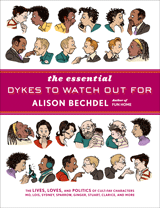Happy New Year! I got up this morning and put my 2014 books-I-read list in order. The whole thing is here if you want to pore through it, but here are the highlights:
Favorite Audiobook: Graceling, by Kristin Cashore. Romantic and exciting; the full-cast audio rendition seemed cheesy at first but won me over. Strangely, the sequel Fire did absolutely nothing for me and I didn’t even finish it. I still plan to give Bitterblue a try.
Favorite Nonfiction: She Would Not Be Moved: How We Tell the Story of Rosa Parks and the Montgomery Bus Boycott, by Herbert Kohl. Nonfiction. Short essay on how elementary school curricula glide over the political and activist elements of Rosa Parks’ story to make it an individual, idiopathic anecdote (“she was tired”). Aimed at educators, but made me want to read more about the bus boycott.
Favorite Kidlit Fiction (Middle Grade and Young Adult):
The Cardturner, by Louis Sachar. Love the passion for detail about bridge, love that Sachar wrote about whatever the hell he wanted and that was bridge. And I like the story too. Were the parents too cartoonish, though?
Flora Segunda (trilogy), by Ysabeau Wilce. I love the physicality, the military mama, the cultural setting, the butlers, the uncertainty of the romance, the plot twists! Can you imagine how excited I was to get a Flora Segunda gift for Fic Corner?
Favorite Adult Fiction: Americanah, by Chimamanda Ngozi Adichie. I immediately felt like I knew the characters and enjoyed their observations. Good pair with Ha Jin’s A Free Life. I want to go back and read her earlier work.
Favorite Trend: Picture-book musician biographies! Some use song lyrics in the text, and 32 pages often seems about right to evoke a life and career trajectory while focusing on the music. Included When the Beat Was Born (DJ Kool Herc), Hello, I’m Johnny Cash, and The Cosmobiography of Sun Ra. Although it’s not a biography, I also loved Gus Gordon’s Herman and Rosie. So much love and music.

Mt. Scott Park, cold and sunny on New Years Day
New Years Day is when I practice my new perfect life and all my shining good habits, like talking to you in this blog and going for walks to the park and cooking vegetables, and yet it’s still a holiday so I can do all these things at leisure and also eat nutella and reread Dykes to Watch Out For and browse a few more Yuletide fics. Speaking of which, I’ll close with links to three Yuletide fics, from kidlit fandoms, that I loved:
- The Kindness of Men, a Black Beauty fix-it for Ginger, with a stealth crossover!
- Frog and Toad Forever, “Or, Frog and Toad are Friends with Benefits,” as the summary says. Non-explicit and super sweet!
- Restrike, what happens next in Mildred Ames’ Anna to the Infinite Power! I guess the book isn’t that obscure, but I’m still excited to find others who have read it, as it was one of the creepiest, most memorable library books I checked out as a kid.

